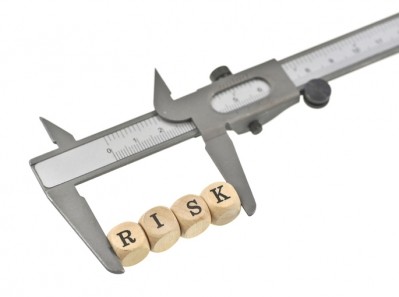EFSA draws a blank on safety of ethoxyquin use in feed
![Ethoxyquin is an antioxidant used in farmed fish or poultry diets [pic: istock.com (c)]](/var/wrbm_gb_food_pharma/storage/images/_aliases/wrbm_large/7/0/8/7/347807-1-eng-GB/EFSA-draws-a-blank-on-safety-of-ethoxyquin-use-in-feed.jpg)
“This is due to an overall lack of data to assess the safety of the substance, including its metabolites, and the presence of an impurity (p-phenetidine) which is a possible mutagen [substances causing mutations in the genetic material of both animals and humans],” said the Authority in an opinion released yesterday.
The European Food Safety Authority (EFSA) found, as a result of the manufacturing process, p-phenetidine remains in the feed additive.
From rubber industry to fish feed
Ethoxyquin was originally developed by the rubber industry to prevent rubber from cracking as a result of the oxidation of isoprene. Because of its high antioxidant efficiency and stability, it was further developed for use as a preservative in feeds as it protects lipids against peroxidation and stabilizes fat-soluble vitamins (A and E).
As a feed additive, it is primarily used as an antioxidant in canned pet food and in farmed fish or poultry diets.
It is also used to prevent spontaneous combustion of fish meal, which is very sensitive to oxidation, during transportation by sea. Indeed, it is a legal requirement of the International Maritime Organization (IMO) to add ethoxyquin to fish meal during transportation.
The substance, ethoxyquin itself, is considered non-genotoxic, said EFSA. However, the Authority found that one of its metabolites, ethoxyquin quinone imine, could be genotoxic which means it could damage DNA, thus indicating a potential safety concern.
The EU risk assessor said it identified considerable data gaps when assessing the exposure and the safety of ethoxyquin (EQ) for animals, consumers and the environment.
The Authority found that concentrations of 50 mg ethoxyquin/kg and 11 mg ethoxyquin/kg complete feed might be considered as potentially safe for chickens and for breeders and for dogs, respectively. But no conclusion on potential safe levels for other poultry, pigs, ruminants, and fish is possible, it said.
“The safety of the use of ethoxyquin in feed for piglets is not demonstrated by a tolerance study. No conclusion on the safety of EQ for other pigs is possible. Owing to the absence of data, no conclusions can be made on the safety of ethoxyquin for calves, cattle for fattening, dairy cows, sheep and goats. Considering the data gaps in the available studies, no safe dietary level for fish, including salmonids, can be derived.
Overall, when considering the presence of p-phenetidine in the additive, no conclusion on any safe level of the additive for target animals can be drawn,” said the Parma-based risk assessor.
Re-evaluation process
The additive is currently authorized in the EU as an antioxidant in feed for all animals, except dogs, at an upper limit of 150 mg/kg complete feed, either alone or in combination with other synthetic antioxidants such as butylated hydroxytoluene (BHT) and butylated hydroxyanisole (BHA). In dog feed, the allowed maximum content is 100 mg/kg complete feed.
But EFSA was asked to re-assess the safety of ethoxyquin for target animals, consumers, users and the environment under EC Regulation 1831/2003.
The Parma-based agency said it used the data provided by the applicant, ANTOXIAC - the FEFANA antioxidants authorization consortium - together with data from other sources, such as previous risk assessments by EFSA or other expert bodies, peer-reviewed scientific papers, other scientific reports and experts’ elicitation knowledge, to deliver its latest findings on the substance.
And the Authority reported ANTOXIAC, had requested, during the re-evaluation process, that ethoxyquin should be applied to feed of all target animals at an upper limit of 50 mg/kg complete feed for all animal species, down from the current 150 mg/kg complete feed.
FEFANA response
Commenting on the opinion, the EU association of specialty feed ingredients and their mixtures, FEFANA, said it "acknowledges the publication of the EFSA opinion and understands the limitations in the risk assessment due to data gaps identified by the EFSA experts.”
On the comments made by EFSA regarding the presence of the impurity, p-phenetidine, the trade group said ethoxyquin producers in ANTOXIAC have already taken measures to significantly reduce its concentration in ethoxyquin.
In order to address the critical data gaps, FEFANA said the ANTOXIAC group has already been taking actions, and will continue carrying out the appropriate studies to generate the data necessary to assess the safety of the product under the defined conditions of use. “New insights will then be shared with the authorities,” said a FEFANA statement on the opinion.
As regards the toxicity profile of one of the additive’s metabolites, quinone imine, as raised by EFSA, one further study is being performed by ANTOXIAC to complement the dataset and clarify this item, added the association.
FEFANA said it also wanted to emphasize the important role that ethoxyquin plays in animal nutrition: “Many natural antioxidants may be effective in preserving feed, but, in many cases, such protection is insufficient. Therefore, synthetic antioxidants must be applied. Ethoxyquin is currently the most efficient antioxidant for this use. Hence, it can be used at lower concentration than other authorized antioxidants,” said the trade group.
Public concerns over feed additive
The European Commission is said to have considered ethoxyquin as a priority in the feed additive re-evaluation process.
The substance has undergone several national and international assessments, particularly since 1990, when reports on adverse effects in different target animals, mainly dogs, reached the public.
In recent years, there have been concerns raised in different media about the use of ethoxyquin in farmed fish feed, noted EU aquaculture trade body, FEAP, in a position paper last year.
Ethoxyquin was allowed to be used as a pesticide in the EU until 2009, when the authorization for that application was withdrawn.
Some countries outside of the EU have brought in such legal threshold values as maximum residue limits (MRLs) for ethoxyquin - the US has introduced MRLs of 0.5mg/kg for meat and eggs, 3mg/kg for chicken liver, and 5mg/kg for fat. In Japan, a MRL of 1.0mg/kg has been set for fish.
The EFSA opinion on ethoxyquin can be found here.















